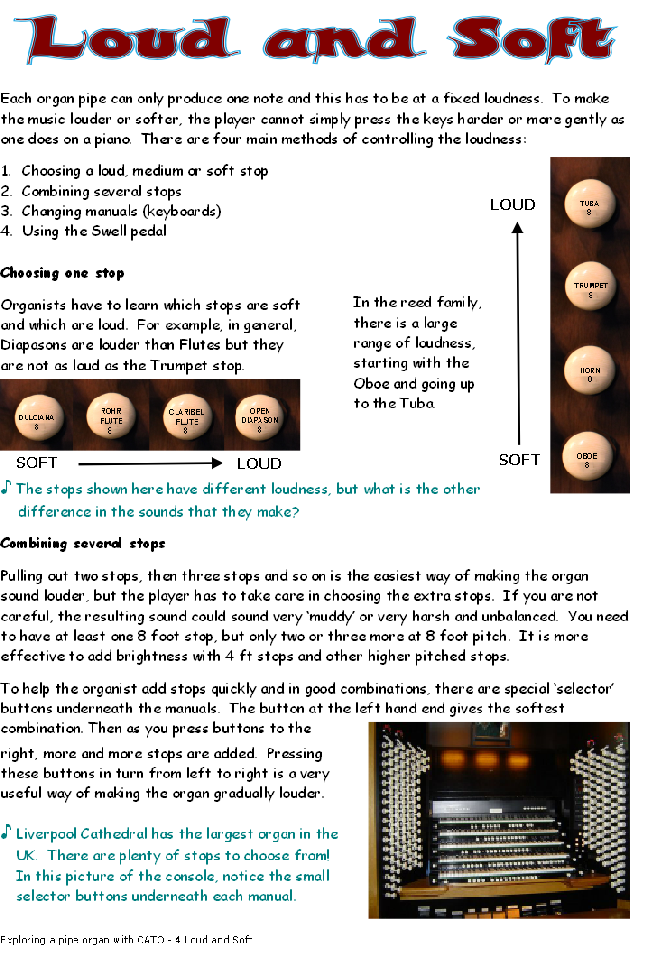
Commentary for Teachers
4 Loud & Soft
The ‘feel’ and function of an organ keyboard is fundamentally different from that of a piano.
Organ:
1. On a mechanical action organ, the keys are connected to the individual pipes by a system of levers which sometimes demand strong downward pressure.
2. A pipe sounds continuously while a key is depressed. There is no control over loudness.
3. The release of the key requires more precise control than with a piano.
4. There is no equivalent of a piano’s sustaining pedal, so organists learn how to play a series of notes ‘legato’ (joined up) without any gaps between the sounds.
Piano:
1. The key is connected to a hammer which hits a string momentarily.
2. The sound gradually dies away after striking a note.
3. The downward force on the key determines the loudness of the sound.
4. The sustaining pedal is used to achieve ‘legato’ playing.
♪ The stops shown here have different loudness, but what is the other difference in the sounds that they make?
The stops have different loudness, but the tone of the sound is also different.
Reeds stops are generally louder than flue stops. As with flues, stops have different loudness, but the tone of the sound is also different.
Organs vary in their mechanical aids or ‘accessories’ for making the selection of
stops easier. In these examples the buttons activate electro-